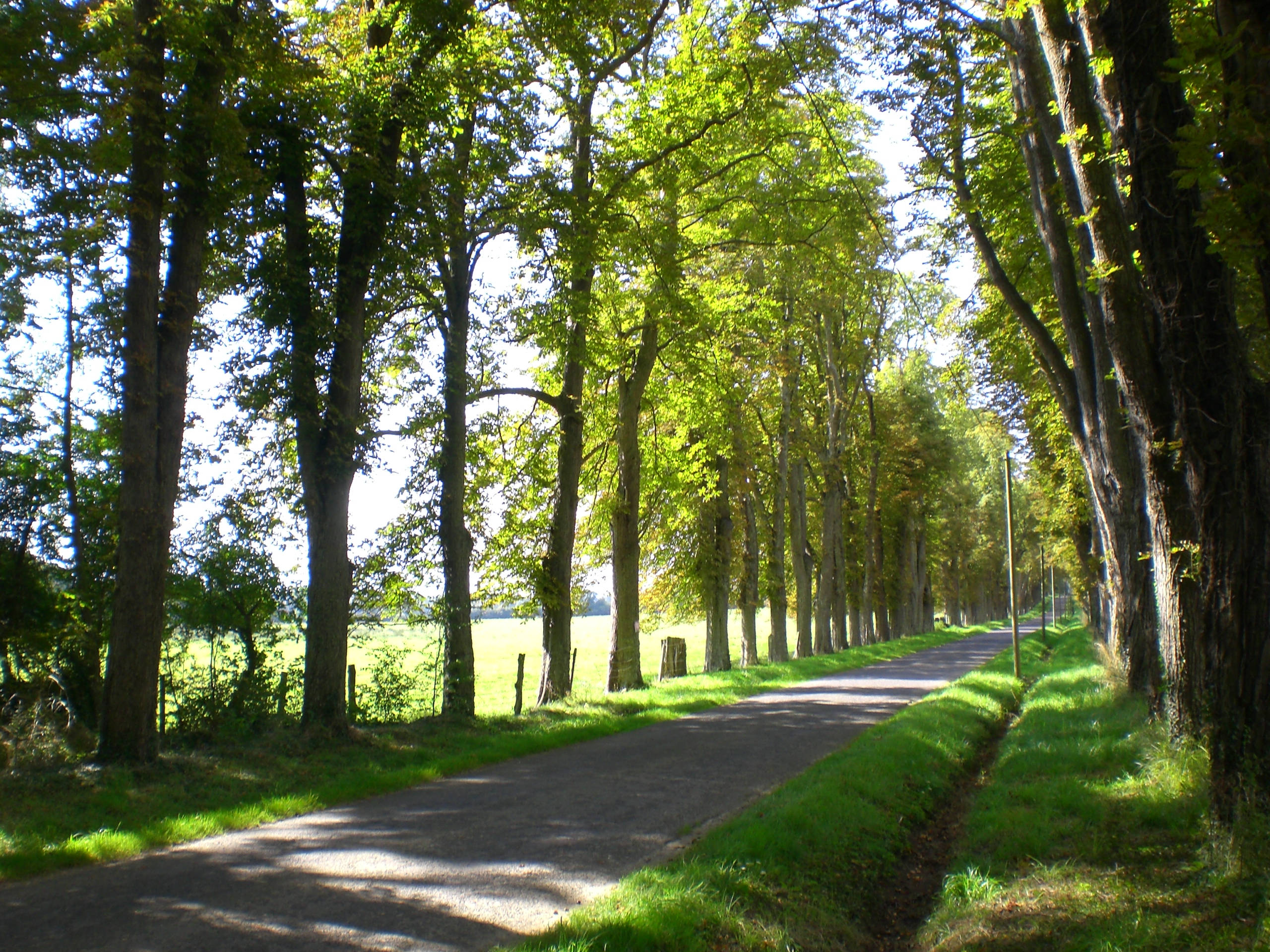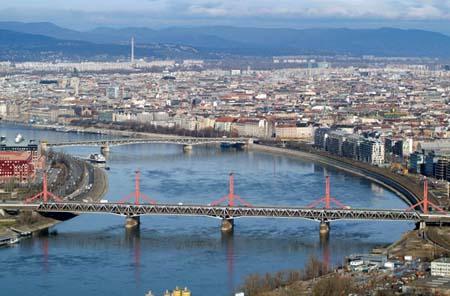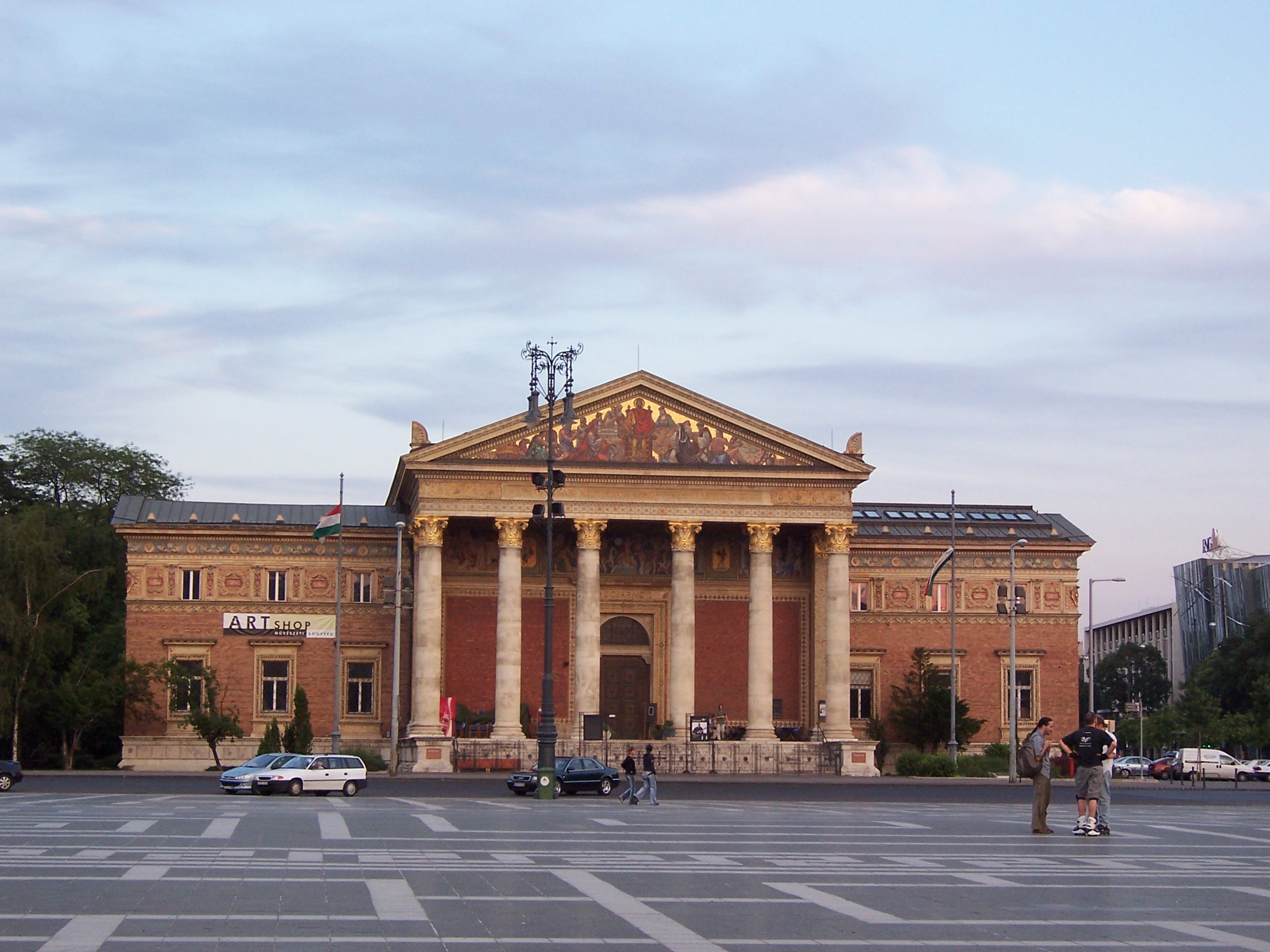|
Andrássy út
Andrássy Avenue ( hu, Andrássy út) is a boulevard in Budapest, Hungary, dating back to 1872. It links Erzsébet Square with the City Park (Budapest), Városliget. Lined with spectacular Neo-renaissance mansions and townhouses featuring fine facades and interiors, it was recognised as a World Heritage Site in 2002. It is also one of Budapest's main shopping streets, with fine cafes, restaurants, theatres, embassies and luxury boutiques. Among the most noticeable buildings are the State Opera House, the former Ballet School (under reconstruction for several years), the Zoltán Kodály Memorial Museum and Archives, the Hungarian University of Fine Arts, and the Ferenc Hopp Museum of East Asian Arts. History It was decreed to be built in 1870, to discharge the parallel Király utca from heavy traffic and to connect the inner city parts with the City Park (Budapest), City Park. Its construction began in 1872 and the avenue was inaugurated on August 20 (a national holiday), 1876. Its ... [...More Info...] [...Related Items...] OR: [Wikipedia] [Google] [Baidu] |
Budapest Metro
The Budapest Metro ( hu, Budapesti metró) is the rapid transit system in the Hungarian capital Budapest. It is the world's oldest electrified underground railway system, and the second oldest underground railway system with multiple stations, after the originally steam-powered London Underground, Budapest's iconic Line 1 was completed in 1896. The M1 line became an IEEE Milestone due to the radically new innovations in its era: "Among the railway's innovative elements were bidirectional tram cars; electric lighting in the subway stations and tram cars; and an overhead wire structure instead of a third-rail system for power." Since 2002, the M1 line was listed as a UNESCO World Heritage Site. History To clarify where the first "metro" in continental Europe was built, a few distinctions must be made. While the original Metro Line 1 is the oldest electrified underground railway in continental Europe, it is not the oldest underground railway. Outside of the United Kingdom ... [...More Info...] [...Related Items...] OR: [Wikipedia] [Google] [Baidu] |
End Of Communism In Hungary (1989)
Communist rule in the People's Republic of Hungary came to an end in 1989 by a peaceful transition to a democratic system. After the Hungarian Revolution of 1956 was suppressed by Soviet forces, Hungary remained a communist country. As the Soviet Union weakened at the end of the 1980s, the Eastern bloc disintegrated. The events in Hungary were part of the Revolutions of 1989, known in Hungarian as the ' (). Prelude Decades before the Round Table Talks, political and economic forces within Hungary put pressure on Hungarian communism. These pressures contributed to the fall of communism in Hungary in 1989. Economic problems The New Economic Mechanism was the only set of economic reform in Eastern Europe enacted after the wave of 1950s and 60s revolutions that survived past 1968. Despite this, it became the weakest point of Hungarian communism, and a pressure that contributed greatly to the transition to democracy. In 1968, the Central Committee of the Hungarian Socialist Wo ... [...More Info...] [...Related Items...] OR: [Wikipedia] [Google] [Baidu] |
Hungarian State Opera House
The Hungarian State Opera House ( hu, Magyar Állami Operaház) is a neo-Renaissance opera house located in central Budapest, on Andrássy út. Originally known as the Hungarian Royal Opera House, it was designed by Miklós Ybl, a major figure of 19th-century Hungarian architecture. Construction began in 1875, funded by the city of Budapest and by Emperor Franz Joseph I of Austria-Hungary, and the new house opened to the public on the 27 September 1884. Before the closure of the "Népszínház" in Budapest, it was the third largest opera building in the city; today it is the second largest opera house in Budapest and in Hungary. Touring groups had performed operas in the city from the early 19th century, but as Legány notes, "a new epoch began after 1835 when part of the Kasa National Opera and Theatrical Troupe arrived in Buda". Legány, p. 630 They took over the Castle Theatre and, in 1835, were joined by another part of the troupe, after which performances of operas were given ... [...More Info...] [...Related Items...] OR: [Wikipedia] [Google] [Baidu] |
Andrássy út Budapest 1896
The House of Andrássy is the name of a Hungarian noble family of very ancient lineage that was prominent in Hungarian history. The full family name is ''Andrássy de Csíkszentkirály et Krasznahorka''. ''Csíkszentkirály'' is a town in modern-day Romania, now called Sâncrăieni, while Krásna Hôrka is a castle in Slovakia. Recent history The present head of the family is Count Gyula Andrássy de Csik-Szent-Király et Kraszna-Horka (b. 1927), who with his family currently resides in Canada. He married as his first wife the former Renate Hiller (b. 1928) in 1958, with no issue. He married secondly in 1964 the former Lesley Trist (b. 1934). By his second wife, he has one son, Michael (b. 1967), and one daughter, Ilona (b. 1965). Count Gyula Andrássy is the son of the late Count Mihály Andrássy (1893–1990) and his late wife, ''née'' Countess Gabrielle Károlyi de Nagy-Károly (1899–1992). The paternal uncle of Count Gyula Andrássy was the late Count Imre Andrássy (1 ... [...More Info...] [...Related Items...] OR: [Wikipedia] [Google] [Baidu] |
Villa
A villa is a type of house that was originally an ancient Roman upper class country house. Since its origins in the Roman villa, the idea and function of a villa have evolved considerably. After the fall of the Roman Republic, villas became small farming compounds, which were increasingly fortified in Late Antiquity, sometimes transferred to the Church for reuse as a monastery. Then they gradually re-evolved through the Middle Ages into elegant upper-class country homes. In the Early Modern period, any comfortable detached house with a garden near a city or town was likely to be described as a villa; most survivals have now been engulfed by suburbia. In modern parlance, "villa" can refer to various types and sizes of residences, ranging from the suburban semi-detached double villa to, in some countries, especially around the Mediterranean, residences of above average size in the countryside. Roman Roman villas included: * the ''villa urbana'', a suburban or country seat t ... [...More Info...] [...Related Items...] OR: [Wikipedia] [Google] [Baidu] |
Allée
In landscaping, an avenue (from the French), alameda (from the Portuguese and Spanish), or allée (from the French), is traditionally a straight path or road with a line of trees or large shrubs running along each side, which is used, as its Latin source ''venire'' ("to come") indicates, to emphasize the "coming to," or ''arrival'' at a landscape or architectural feature. In most cases, the trees planted in an avenue will be all of the same species or cultivar, so as to give uniform appearance along the full length of the avenue. The French term ''allée'' is used for avenues planted in parks and landscape gardens, as well as boulevards such as the ''Grande Allée'' in Quebec City, Canada, and ''Karl-Marx-Allee'' in Berlin. History The avenue is one of the oldest ideas in the history of gardens. An Avenue of Sphinxes still leads to the tomb of the pharaoh Hatshepsut. Avenues similarly defined by guardian stone lions lead to the Ming tombs in China. British archaeologists have ... [...More Info...] [...Related Items...] OR: [Wikipedia] [Google] [Baidu] |
Oktogon (intersection)
Oktogon is one of Pest's major intersections, located at the junction of the Grand Boulevard () and Andrássy Avenue () in Budapest, Hungary. This junction, one of the city's most important, is named for its octagonal shape. Oktogon is also a station on the yellow M1 (Millennium Underground) line of the Budapest Metro, which runs underneath Andrássy Avenue to Heroes' Square (). History Prior to the construction of Andrássy Avenue in 1871, there was a large hole at the site, which was then filled in. The next two years saw the construction of the four large eclectic buildings surrounding the intersection, built according to plans of architect Antal Szkalnitzky. The intersection was again under significant construction in 1894–1896 as part of the Millennium Underground construction project built from the surface using the cut-and-cover method. Oktogon has had numerous names: from 1936 to 1945, it was renamed Mussolini Square, then between 1945 and 1990 it was known as ... [...More Info...] [...Related Items...] OR: [Wikipedia] [Google] [Baidu] |
Andrássy 94 - 1895
The House of Andrássy is the name of a Hungarian noble family of very ancient lineage that was prominent in Hungarian history. The full family name is ''Andrássy de Csíkszentkirály et Krasznahorka''. ''Csíkszentkirály'' is a town in modern-day Romania, now called Sâncrăieni, while Krásna Hôrka is a castle in Slovakia. Recent history The present head of the family is Count Gyula Andrássy de Csik-Szent-Király et Kraszna-Horka (b. 1927), who with his family currently resides in Canada. He married as his first wife the former Renate Hiller (b. 1928) in 1958, with no issue. He married secondly in 1964 the former Lesley Trist (b. 1934). By his second wife, he has one son, Michael (b. 1967), and one daughter, Ilona (b. 1965). Count Gyula Andrássy is the son of the late Count Mihály Andrássy (1893–1990) and his late wife, ''née'' Countess Gabrielle Károlyi de Nagy-Károly (1899–1992). The paternal uncle of Count Gyula Andrássy was the late Count Imre Andrássy (1 ... [...More Info...] [...Related Items...] OR: [Wikipedia] [Google] [Baidu] |
Budapest Museum Quarter
The Budapest Museum Quarter is a proposed new cultural and tourist site to be located on Andrássy út in Budapest, Hungary, and has at its core the merger of the Hungarian National Gallery with the Budapest Museum of Fine Arts into one institution. The concept has been around since at least 2008 when the Director of the Museum of Fine Arts proposed combining the two collections. In 2010, the Fidesz political party included the idea in its election campaign. Several other Budapest museums would be affected by the plan, which faces not only economic and legal hurdles, but also criticism from both members of the public and art professionals alike. Background Hungarian national museum system National museums in Hungary are those institutions that are state–owned and centrally financed. Many of them were created in the late 19th century under the Austro-Hungarian Monarchy as specialized complementary institutions to the original Hungarian National Museum. Although they received sta ... [...More Info...] [...Related Items...] OR: [Wikipedia] [Google] [Baidu] |
Hungarian National Gallery
The Hungarian National Gallery (also known as Magyar Nemzeti Galéria), was established in 1957 as the national art museum. It is located in Buda Castle in Budapest, Hungary. Its collections cover Hungarian art in all genres, including the works of many nineteenth- and twentieth-century Hungarian artists who worked in Paris and other locations in the West. The primary museum for international art in Budapest is the Museum of Fine Arts (Budapest), Museum of Fine Arts. Exhibitions The National Gallery houses Medieval, Renaissance, Gothic art, and Baroque Hungarian art. The collection includes wood altars from the 15th century. The museum displays a number of works from Hungarian people, Hungarian sculptors such as Károly Alexy, Maurice Ascalon, Miklós Borsos, Gyula Donáth, János Fadrusz, Béni Ferenczy, István Ferenczy and Miklós Izsó. It also exhibits paintings and photographs by major Hungarian artists such as Brassai and Ervin Marton, part of the circle who worked in P ... [...More Info...] [...Related Items...] OR: [Wikipedia] [Google] [Baidu] |
Kunsthalle Budapest
The Budapest Hall of Art or Palace of Art, ( Hungarian − ''Műcsarnok Kunsthalle''), is a contemporary art museum and a historic building located in Budapest, Hungary. Description The museum building is on Heroes' Square, facing the Budapest Museum of Fine Arts. The art museum hosts temporary exhibits contemporary art. It operates on the program of German Kunsthalles, as an institution run by artists that does not maintain its own collection. It is an Institution of the Hungarian Academy of Arts. Its government partner is the Ministry of Education and Culture. It has a bookshop, library, and the Műcsarnok Café that overlooks the square. Building The large Neoclassical style structure, designed by architects Albert Schickedanz and Fülöp Herczog, was completed in 1896. It was originally built for millennium celebrations. Its portico is in the Greek Revival style. The three-bayed, semi-circular apse houses a roofed exhibition hall with skylight A skylight (som ... [...More Info...] [...Related Items...] OR: [Wikipedia] [Google] [Baidu] |


.jpg)
.jpg)


.jpg)


